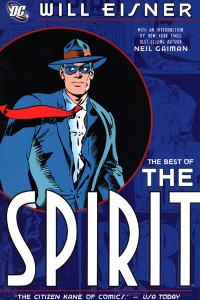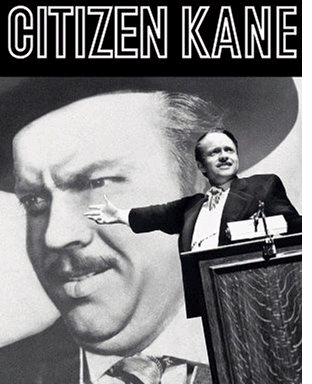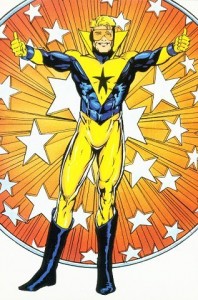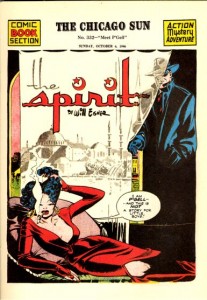An ode to Booster Gold
It’s funny how everyone has a guilty pleasure - a band, movie or book that we love but was hardly a critical or commercial success. Comic book fans are no different. They always have at least a couple of characters that they hold dear to their heart.
I know that I’ve got a few. There’s one name that’s always at top of mind for me though: Booster Gold.
Never heard of him? That’s cool, most people haven’t. Indeed, it’s a running joke on an episode of Justice League Unlimited that everyone thinks that he’s Green Lantern and they’re disappointed when they find out that it’s Booster Gold.
Booster Gold is Michael Jon Carter, a collegiate football star from the far-flung future of the 25th century. He started placing bets on his own games and then threw them for profit. Disgraced, he became a night watchman at a museum that housed artefacts from the so-called Age of Heroes – our modern heroes like Superman and Batman.
With the help of a floating security robot named Skeets, Booster stole equipment and weapons from the displays, and used Rip Hunter’s time machine to travel to the 20th century. When he arrived in the 1980s he used his limited knowledge of historical events to position himself in the right place at the right time and become a superhero brand that would save lives as well as turn a healthy profit.
With Skeets acting as a roving encyclopedia, Booster blunders from heroic episode to heroic episode, often doing more harm than good while trying to create a public image that he can gain from financially. Recently (and somewhat improbably) he's become the guardian of the time stream, trying to maintain order and balance in the universe.
There are two things that appeal to me about Booster: his origin and how well he reflects the zeitgeist of the 1980s.
I think that the best fictional characters, superheroes and otherwise, have origins that explain their motivation for the rest of their existence. Sticking to comic books, some Batman, Spider-Man and the Punisher are popular because they are driven by a combination of guilt and anger over the death of their beloved family members.
All three of those creation stories make sense. To an extent, the reader can understand why these guys are dressing in spandex and putting their lives in danger. Their behaviour is clearly motivated by the tragedy in their origins.
Booster Gold’s driving force is simple: he’s greedy. He covers his uniform with corporate logos, puts money on the stock exchange before big bumps and is generally a glory hog. Or that time he married a sexagenarian for her money. It's not an altruistic reason for becoming a superhero, but it has an inherent logic. You can get what he’s about.
Just as Captain America was ideally suited to the surge of patriotism in the lead up to World War 2 or Marvel heroes like Iron Man and Nick Fury fit the Cold War era, Booster Gold’s 1986 debut was perfectly timed. He was just right for the greed is good, egotistical 80s. He developed as a character into the 1990s, just as corporate monopolies disguised as “synergy” and mass sponsorship became the norm in North America.
Booster Gold is often under-utilized but instantly appealing to anyone who grew up in the 1980s. He’s greedy, funny, a little bit cynical and surprisingly heroic. More than just about any other big name comic book character he fits into our contemporary worldview and, most importantly, he’s believable. The reader can understand why he does the things he does. He’s as real as a man from the future can be, and although he’s a guilty pleasure of mine, I rarely regret it.
Graphic Novel Review: The Best of the Spirit by Will Eisner
 Amongst comic book fans, Will Eisner’s the Spirit is legendary. It’s the foundation on which modern sequential art has been built. Indeed, on the cover of the Best of the Spirit, USA Today praised it as “The Citizen Kane of Comics.”
Amongst comic book fans, Will Eisner’s the Spirit is legendary. It’s the foundation on which modern sequential art has been built. Indeed, on the cover of the Best of the Spirit, USA Today praised it as “The Citizen Kane of Comics.”
This, of course, made me pretty sceptical. After all, one of my favourite pet theories is Citizen Kane Syndrome, which states that influential classics lose their lustre because what made them shine is now cliché. I shouldn’t have been concerned though – the Spirit easily lives up to all the hype.
The Spirit was a widely syndicated adventure comic that appeared as an insert in Sunday newspapers across the United States starting with the aptly named "Origin of the Spirit" published on June 2, 1940. The Spirit was originally Denny Colt, a criminologist killed while on a case. Reincarnated as the apparently immortal Spirit, he sought justice around the world. The original run lasted 12 years, and changed the way comic book writers and artists worked.
Eisner is often cited as an artistic genius who revolutionized pacing and layout. All of that skill is brought to life on the pages of the Best of the Spirit. His characters are cartoonish, but remain incredibly emotive. Characters that appear for only a panel or two are instantly sympathetic. And if you want to see just how groundbreaking his design is, please check out the picture on the right.
I’ve often heard it said that Eisner was not afraid to spill ink all over the page and make his work incredibly dark. This is true, he’s not afraid of filling negative space with ink. However, it’s his colouring that was striking. It is incredibly bright and vibrant – bright yellows, oranges and greens pop in comparison to the black ink.
Also, when the scene calls for it, Eisner will leave more than half a page blank with some lettering and one or two characters. His reputation for dark, moody work belied a surprisingly diverse and colourful style.
What really impressed me though, was the quality of his writing.
The stories are short – seven pages each – but cram in an entire tale that manages to include character development, action and resolution in one neat package. This is a far cry from today’s decompressed epics where it takes nearly 100 pages for anything of substance to happen.
I would love to see a monthly Batman or Spider-Man book where there are two or three of these quick stories. They could be one-and-dones where the hero handles a case in the span of one night. I think it’d be a great contrast to the longer, more involved plotlines being used today. It would also make a great jumping on point for new fans.
There are some small drawbacks to the Spirit, of course. The inadvertent racism of the Spirit strips can make the reader uncomfortable. Aside from a few brief glimpses, the highly offensive Ebony White wasn’t included in this collection. But there is still a brief appearance of an Italian landlady, Mrs. Pizza, who says things like “No sorr... She’sa keep d’apart-ement joosa like dis...” Yikes. Eisner had to create characters in shorthand to save space, and too often that means stereotypes.
What’s most impressive about this book is how well it holds up. These stories were originally published between 1940 and 1950, but they’re still quick and fun. I’m definitely going to try and pick up more editions of the Spirit to add to my collection.
The Best of the Spirit was a pleasant surprise that confounded my expectations and is definitely worth checking out if you're not familiar with Will Eisner's work.
Super-Hero Originality Game
 When I worked at the World’s Biggest Bookstore we used to come up with little games to help us kill time. The Movie Game, the Hand-Loop Game, The Game, and, in a horrifying combination of nerdiness and creativity: the Super-Hero Originality game.
When I worked at the World’s Biggest Bookstore we used to come up with little games to help us kill time. The Movie Game, the Hand-Loop Game, The Game, and, in a horrifying combination of nerdiness and creativity: the Super-Hero Originality game.
The premise is simple; name a Marvel Comics or DC Comics character that you believe can carry their own monthly title. Providing evidence is crucial – if they have had their own series, or currently have a monthly title, then your case is made. Otherwise, you have to come up with a pitch of your own to convince your peers that this protagonist can carry a monthly book.
As an added challenge there are a few guidelines to guarantee that the character is truly original:
- The character must be from the mainstream DC or Marvel Universe. Sorry, no Ultimates or New Universe or 2099 or Wildstorm or anything like that. Core Universe!
- Their first appearance has a cover date of January 1980 or later. That doesn’t sound tough, but there really aren’t that many characters under 30 years old.
- They can’t be a mutant. Not to hate on the X-Men, but in the late 80s and early 90s “(s)he is a mutant with a murky past!” became the de facto Marvel Comics origin, and it doesn’t strike me as a particularly creative background for a character. It doesn’t provide motivation or any kind of character depth.
- No legacy characters. I love Jamie Reyes, but, again, he’s a character who is the latest in a long line of similarly named and costumed heroes. That is, by definition, not original.
- No derivatives. Sorry She-Hulk, Red Hulk and Blue Hulk. Don’t waste our time, Conner Kent. Like legacy characters, the idea is to avoid protagonists clearly based on well-established characters.
One slow Sunday at the store my co-worker Jared and I put together a short list that met all these criteria, while remaining viable choices for ongoing series. Please, comment and see if you can add to it:
- Booster Gold
- The Sentry
- Wild Dog
- Speedball
- Elektra
- Venom (Eddie Brock or Angelo Fortunato but not Mac Gargan)
- Amanda Waller
- Terror Inc.
- Deathstroke
- Deadpool*
Can anyone add to this list? There must be more characters that can fill it out. If your hero has not had a monthly series before (or currently) please make sure to explain why you think they can carry their own book.
*Deadpool is a pretty contentious choice. He’s not a mutant, but he is definitely a part of the X-Men mythos. Also his powers are literally a derivative of Wolverine’s healing factor. Still, he’s not an obvious rip-off of Wolverine. He’s definitely a borderline choice.
Graphic Novel Review: Captain America: Winter Soldier vol. 1 & 2
One of my New Year’s resolutions was to read more comic books and graphic novels. Hardly a self-improvement project, I know, but I want to get down with my nerd self.
My first graphic novel of 2010 is Captain America: Winter Soldier vol. 2, allowing me to complete the first story arc of Ed Brubaker’s popular run on one of Marvel Comics’ most recognizable characters.
I’ve never been much of a Captain America fan. I prefer grittier characters like Batman or the Punisher, so his squeaky clean image never appealed to me. And since I’m Canadian, all the patriotic beats were lost on me.
But Brubaker’s Winter Soldier storyline sucked me in. I’d heard that the new Captain America series was going to be bringing back Bucky, a character who had been dead since the end of World War II, and it hooked me.
This was a Big Deal to comic fans. Bucky had been Cap’s 16-year-old sidekick during the war, but was tragically killed when a missile he was trying to disarm exploded in mid-flight. The same incident dropped Cap into the frigid North Sea, freezing him until the 1960s.
The death of Bucky had always been cited as the reason why Marvel’s superheroes don’t have teenaged sidekicks - unlike their DC counterparts - and it added a sense of realism to the company’s mythos.
For Brubaker to be retconning a fundamental element of Marvel Comics seemed like heresy, albeit an intriguing act of rebellion.
Captain America: Winter Soldier Book One and Two brings together issues 1-14 of the fifth monthly series to star Steve Rogers. They revolve around a terrorist attack that was apparently perpetrated by a mythical Cold Warrior known as the Winter Soldier who may actually be Cap’s former partner Bucky.
Resurrection storylines have become commonplace in comics, a constant recycling of characters who had been killed for dramatic effect, only to return. It’s a trend that is holding back a medium that I love. But Brubaker handles the return of the long-dead hero with a deft hand that provides not just a plausible explanation for his survival, but an engrossing story.
Interspersed with action, character moments and plot developments, Winter Soldier begins with Captain America becoming angry and frustrated with the inability of the United States government to attack countries that sponsor terrorism. The detonation of a Weapon of Mass Destruction in Philadelphia leaves a trail that leads to former Soviet general Aleksander Lukin, and his shadowy operative the Winter Soldier.
Even the name Winter Soldier is clever work by Brubaker. It’s a reference to the loyal American revolutionaries who stuck with George Washington over the harrowing winter in Valley Forge, but also to the Winter Soldier Investigation, a Viet Nam era examination of atrocities and war crimes committed by the United States Armed Forces.
Brubaker seamlessly connects the Second World War, the Cold War, modern terrorism and Captain America’s complex continuity. It’s not just that he brings in plot points from every era of Cap’s 70 years of existence, but the pacing and style of the book draws heavily on these aspects of the character’s history.
To me, a classic Captain America story has him and a partner rushing off into danger to stop a catastrophe from befalling the United States or the world. Winter Soldier is no different, with Cap rushing to stop Kronas Corporation with the Falcon riding shotgun.
Steve Epting’s art work in this series is fantastic. I can’t think of a current comics creator who makes better use of inking and colouring techniques. His characters are expressive and natural in conversation, and dynamic and fun during action scenes.
In particular, the way he draws the acrobatic Captain America jumping, rolling and bouncing in fight scenes is thrilling.
Winter Soldier breaks an old comic fan saying: “No one stays dead, except Bucky and Uncle Ben.” The phrase refers to the fact that Peter Parker’s uncle and Captain America’s sidekick must stay dead because their loss is what, in part, forms the hero we know today.
I never thought I’d see the day where that axiom was successfully reversed, but the Winter Soldier saga does it.
The return of James “Bucky” Buchanan Barnes was enough to catch my interest and buy the first volume of Captain America: Winter Soldier, and the gripping story has lead me to the rest of the series. Brubaker’s writing isn’t some gimmick. It’s some of the best mainstream superhero comic work I’ve ever read.
Citizen Kane Syndrome
 According to the American Film Institute, Citizen Kane is the greatest movie ever made, but when was the last time you saw it on TV? Only high-brow movie channels like Turner Classic Movies or maybe Bravo! will show it, and likely not very often. You’ll never see it as a Fox Saturday matinee or as part of Peachtree’s weekend movie marathon.
According to the American Film Institute, Citizen Kane is the greatest movie ever made, but when was the last time you saw it on TV? Only high-brow movie channels like Turner Classic Movies or maybe Bravo! will show it, and likely not very often. You’ll never see it as a Fox Saturday matinee or as part of Peachtree’s weekend movie marathon.
Why is that? It’s indisputably great, having influenced just about every film made after it and changing the way people saw cinema. But plunk your average movie-goer down in front of Orson Welles’ opus, they’ll likely fall asleep or try switching the channel.
This is what I like to call Citizen Kane Syndrome.
CKS afflicts many movies, but Citizen Kane has all the symptoms: an older, influential work that has become a fixture in culture. It lost its lustre because of its cultural significance.
Contemporary viewers don’t enjoy it because they’re already familiar with many of the artistic touches that made the film brilliant.
Most people don’t realize it but Citizen Kane was the first film to show the ceiling in a room. It’s true. Cameras had never been canted to such a degree that the roof was visible – until 1941 when Citizen Kane came out. It was the first movie to use deep focus throughout. It was pioneered special effects make-up. And on and on.
At the time, these were exciting new narrative techniques. Today? Mehn.
There are countless other aspects of the film that, at the time, were revolutionary, but today are taken for granted.
And, really, how thrilling can a plot twist be when Rosebud’s identity is revealed in a spoof on Tiny Toons?
It happens in every corner of pop culture too.
Stan Lee and Jack Kirby’s incredible run on Fantastic Four launched the Marvel Age. But some of its magic has been lost as the medium and craft have built upon that foundation.
The Beatles were once bigger than Jesus, but now fans of rock music expect faster beats, more complex chords and higher production values.
In Cold Blood remains a chilling look at two murderers, but its impact as creative non-fiction is not what it once was, since the New Journalists (and the New New Journalists, for that matter) have followed Truman Capote’s lead.
CKS forces media consumers into the tricky position of having to consider the historical context of the art not just politically or economically, but creatively as well. This can be a taxing requirement, and it only takes away from the viewing experience.
At the same time, there are some films, books and bands which remain timeless. Shakespeare is the easy example, but the Wizard of Oz (the movie, not the novel) also comes to mind.


